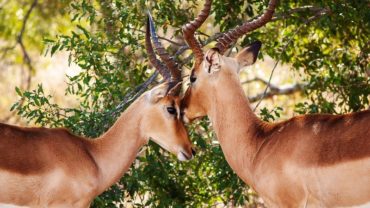via Emdoneni Lodge: Wildlife are an important aspect to our lives, even though we may not understand it completely they play an imperative role in our daily living. The most important thing to remember is that without wildlife, humans would not exist.
There is a great importance in teaching children how to respect wildlife from a young age. It is important for them to understand that wildlife seen out in the open are not the same as their dogs or pets that they may find at home.
We have identified a few considerations and aspects to assist you in giving your children the knowledge they need when it comes to wildlife.
- Wildlife means wild
- Look don’t touch
- Utilise everyday routines to teach children about wildlife
The first and most important thing to remember is that wildlife refers to WILD animals, meaning their behaviour is extremely unpredictable.
It is imperative that children are aware of this as often enough they will question why they are not able to hold and interact with a wild animal but the game ranger at a game reserve can, it is vital that they understand that there are trained professionals who are skilled at handling and facilitating wildlife and that it does not mean they are allowed to do the same.
Animals act and react on instances we will not always understand as we aren’t able to speak to them about how they are feeling as we would with a fellow human being.
Animals communicate through their body language and their instincts and it is important to be aware of this and remind children to act with caution when around wild animals.
A great way for children to see and understand unpredictable behaviour In wild animals is to encourage them to watch shows and documentaries focusing on wild life (It is important for parents to monitor what shows are watched as some may be a bit scary depending on the age of your child.)
These shows are perfect in showcasing animals in their natural habitats and will be perfect for exposing children to the habits, lifestyles and behaviours of wild life as well as to certain characteristics pertaining to specific wildlife that they can then learn from and remember should they come across and animal of the same sorts. If this is not something that you as a parent would allow due to the age of your kids then a simple trip to a nearby Zoo or animal reserve would be the perfect place for your children to see first-hand how wild life behave and why it is so important to respect them.
When animal parks, reserves or lodges constantly remind you and your children not to touch or feed the animals, they are doing this for a very important reason. Wildlife behaviours are unpredictable and they may feel threatened by your child or as though the child is invading their territory. Teaching children to respect these guidelines and respect the lifestyles of the wild animals can start at home by teaching your children the difference between household animals such as dogs, cats and hamsters in comparison to the wildlife found not only in animal reserves or sanctuaries but also out and about in public.
A great way for children to better understand the respect that is needed when it comes to wildlife, is to substitute normal reading books for fun, educational books regarding animals or picture books. This is a great way for parents to point out the differences between wildlife animals such as Cheetahs or Eagles and household pets such as cats or budgies and educate children on how to respect and understand their differences.
Alongside this, sitting outside in your garden with your children and pointing out different wildlife and talking with them regarding the food that is around your garden for these animals to eat or shelter to protect themselves with. Not only is this a great way for children to observe different wildlife but it also builds their knowledge on wildlife that people may not focus on.


